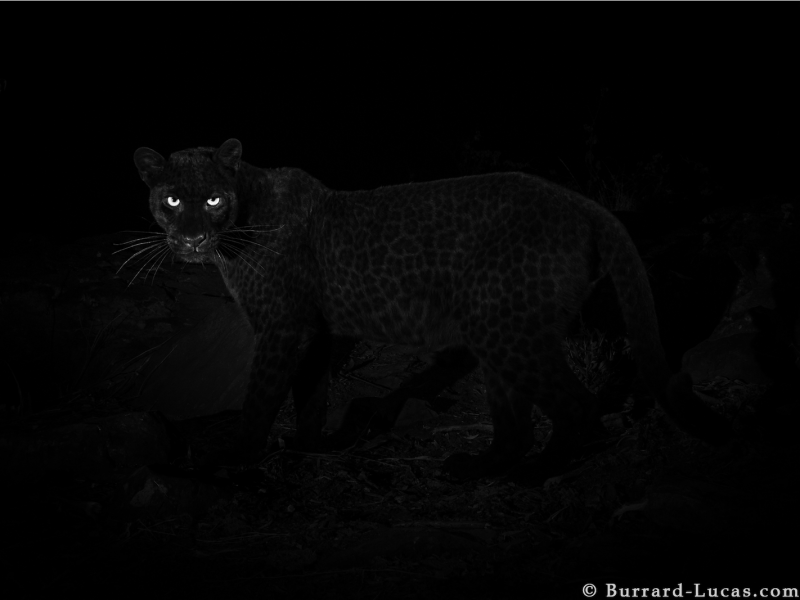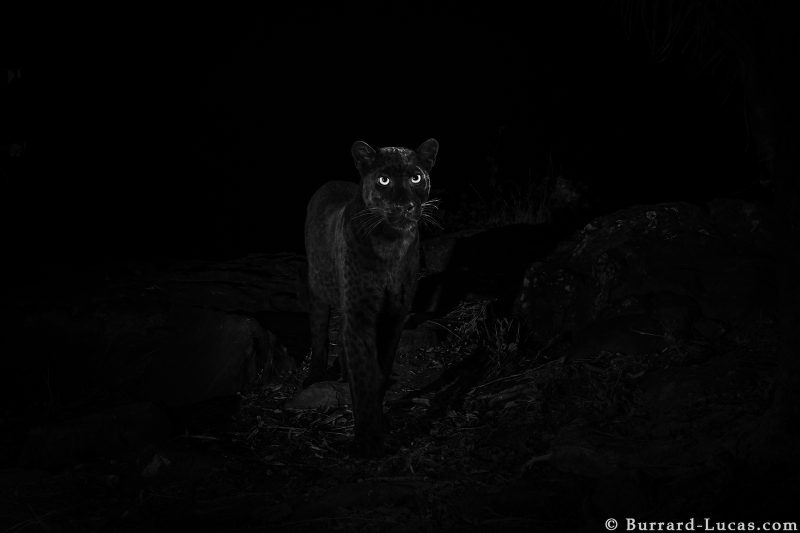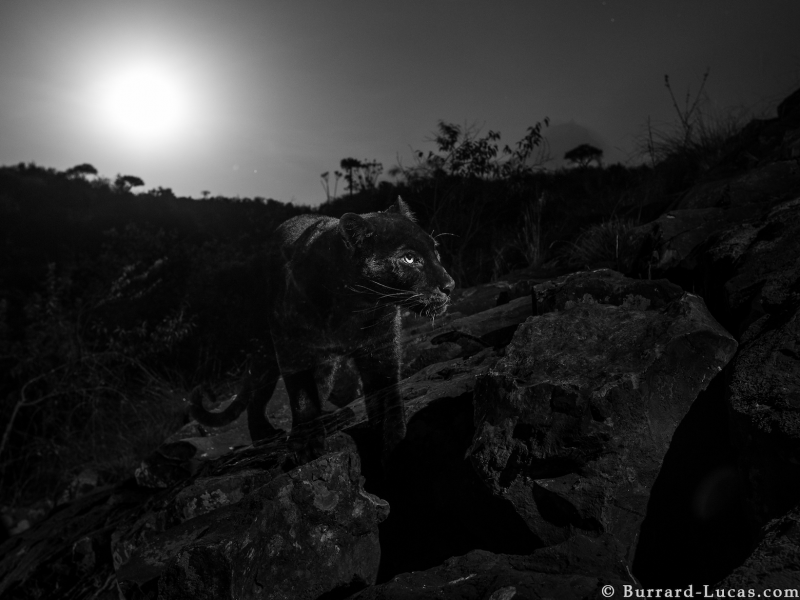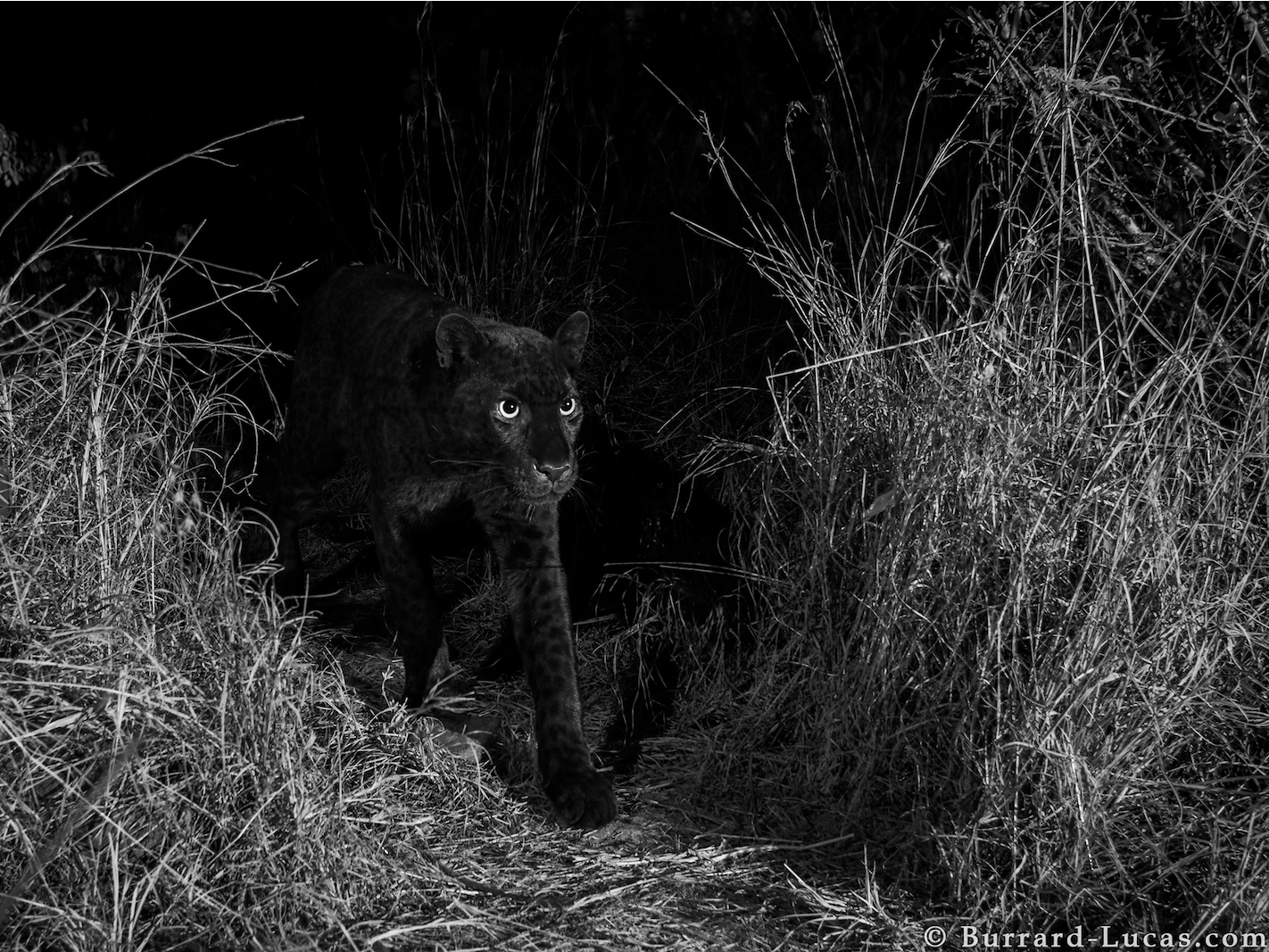- A black leopard has been photographed in Africa for the first time in more than 100 years.
- The creatures are very limited in numbers in the region and sightings are extremely rare.
- The stunning images were captured by Will Burrard-Lucas who used a Camtraptions camera trap to take the photos in the dead of night.
- Melanism (black coloration) occurs in about 11% of leopards, but most are found in Asia.
- The last confirmed photograph of a black leopard in Africa was taken in Ethiopia in 1909, according to the African Journal of Ecology.
“Since childhood, I have been fascinated by stories of black panthers,” begins the blog post of Will Burrard-Lucas.
“For me, no animal is shrouded in more mystery, no animal more elusive, and no animal more beautiful,” the British photographer continues.
It’s hard to argue with Burrard-Lucas, who just became the first person in more than a century to capture an image of a wild African black leopard (also known as a black panther).
The images are out of this world.
Burrard-Lucas traveled to Laikipia Wilderness Camp in Kenya after hearing about a nearby sighting. There he set up a Camtraptions camera trap, complete with motionless sensors and mirrorless camera, on a trail that multiple leopards seemed to be using.

After several days, the photographer returned to his trap hoping, but not expecting, to find imagery of the elusive black leopard.
"I had a quick look at the last trap, not expecting to find much," he wrote on his blog. "As I scrolled through the images on the back of the camera, I paused and peered at the photograph below in incomprehension … a pair of eyes surrounded by inky darkness … a black leopard!
"I couldn't believe it and it took a few days before it sank in that I had achieved my dream."

Capturing imagery of black leopards is so difficult not only because they are extremely secretive, Burrard-Lucas said in an email to INSIDER, but also because only a tiny percentage of leopards are black. The dark colour in black leopards is caused by an excess in melanin pigmentation, which is passed down via recessive genes, meaning both parents must be carriers.
"Melanism occurs in about 11% of leopards globally, but most of these leopards live in South East Asia," Nick Pilfold, a San Diego Zoo global conservation scientist, told CNN.
In the sparse landscape of Africa, melanistic leopards are extremely rare.
"It is likely that black leopards have been living in Kenya all along, it is only that high-quality imagery to confirm it has been missing until now," Pilfold added.

An article in the African Journal of Ecology states that the last confirmed report of a black leopard in Africa was in 1909 in Addis Ababa, Ethiopia.
"Collectively these are the first confirmed images in nearly 100 years of a black leopard in Africa, and this region is the only known spot in all of Africa to have [the] black leopard," Pilfold told USA Today.
Burrard-Lucas posted a behind-the-scenes video showing how he captured the stunning images, which you can watch below.











